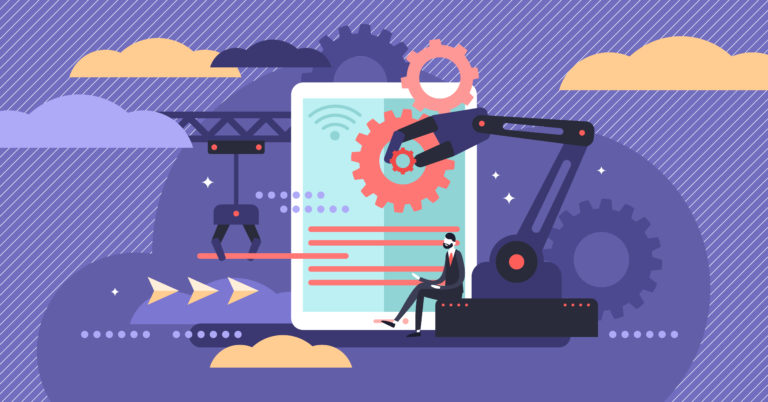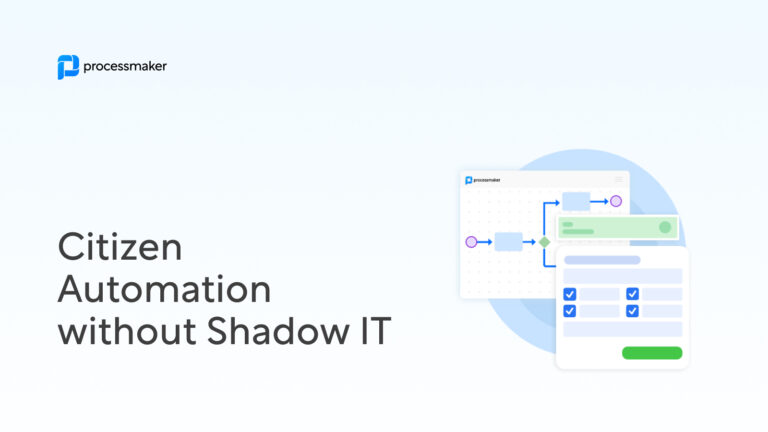Today, more than ever, organizations are relying on digital process automation technologies to improve efficiency, reduce costs, and provide much needed flexibility in uncertain times. With leaner operating budgets, organizations can no longer afford to waste money on time consuming and tedious tasks. For instance, according to one study office workers spend an estimated 69 days per year on administrative tasks, costing organizations $5 trillion per year.
And it is not just office workers that are impacted by inefficient workflows. CEOs spend about 20% of their time on work that could be automated. The truth is, in the modern economy, no organization can hope to optimize its workflows or bottom line without integrating automation into its processes.
The methods by which organizations automate one or more tasks within a workflow is known as digital process automation (DPA). In this article, we will look at what digital process automation is, describe some benefits and examples of common uses of DPA, and conclude by explaining the differences between DPA and robotic process automation.
Digital Process Automation (DPA) defined
Digital process automation, or DPA, is a method whereby digital technology is used to automate one or more tasks involved in a business process. Organizations often use software as a means of automation to optimize its workflows. The use of DPA does not necessarily mean that entire processes are automated. Rather, processes are often partially automated, meaning that some form of human interaction is still required.
Digital process automation is often confused with business process automation. The difference is largely one of scope and timing. Business process automation is a method used to build, execute, and automate an organization’s business processes. DPA, however, typically occurs after a process has been digitalized to some extent.
Benefits of Digital Process Automation
DPA offers organizations many potential benefits. These benefits include:
- Increased employee satisfaction. DPA clarifies employees’ roles and responsibilities. Points at which human intervention and interaction are required are known throughout the organization. Industry leading process automation software allows employees to seek assistance and communicate seamlessly with team members and managers. Organizations can also easily update employees regarding workflow changes.
- Improved customer service. Automation allows employees to focus less on time consuming and tedious tasks and spend more time assisting customers. DPA solutions also improve the customer experience by offering them more efficient and enjoyable interactions with an organization. For instance, banks can improve the customer experience by automating the new account opening process.
- Increased compliance and security. Manual and paper-based processes are not only inefficient, they lead to lost documents, security breaches, and low levels of compliance. DPA tools like Master Data Management (MDM) make is easy to store, secure, and access important information and documentation electronically.
- Reduced operational costs. By automating tasks, employees can complete tasks quicker and focus their time on less repetitive and higher value functions.
- Organizational flexibility. The outbreak of COVID-19 this year illustrates just how important it is for organizations to be able to shift goals quickly. For example, the ability for employees to work from home if needed. Or for higher education institutions the ability to shift to virtual learning model and back again. Even when things return to normal, organizations will continue to need to react to challenges like changing consumer preferences and demands in real-time.
Examples of DPA
There are many different examples and use cases of digital process automation in organizations. Let’s look at two examples, employee and/or customer onboarding and purchase orders, for a better understanding of how DPA works within a given process.
Employee and/or customer onboarding
Hiring employees or starting a relationship with a new customer is a lot of work. Employee onboarding involves completing forms, gathering documentation, setting up training sessions, and assigning assets, among others. Manual onboarding processes can result in excess paperwork, compliance issues, and low levels of employee retention. With DPA, organizations can automate one or more onboarding tasks, removing bottlenecks in workflows by easing transitions between each step in the process.
Likewise, the new account opening and onboarding process requires organizations to collect a lot of information and documentation from customers. Not only is this inefficient and costly, but it leads to drawn out onboarding processes that frustrates new customers. Through DPA, organizations can automate different steps in the process to provide quicker and more enjoyable onboarding experiences.
Purchase orders
Purchase orders are ideal for digital process automation since they are repetitive and have the potential for significant workflow delays. Organizations generally process many purchase order requests each month, both one-time and recurring. POs typically require one or more approvals and may be sent back and forth several times for revisions.
These transitions can result in delays and reduced productivity. With DPA, organizations can streamline their PO approval processes. For instance, once a PO is submitted, digital process automation software can route the request to the appropriate stakeholder for approval and notify the requesting party when it is approved.
Digital Process Automation vs Robotic Process Automation
Much like DPA and business process automation, DPA and robotic process automation are often confused. While the terms mean different things, they are often used together to improve customer experiences. Robotic process automation (RPA), utilizes intelligent automation technology like artificial intelligence (AI) and machine learning (ML) to automate repetitive tasks. RPA aims to replace human intervention in business processes.
DPA, however, is not intended to fully replace tasks completed by humans. Rather, digital process automation focuses on automating processes to improve workflows. So, in this sense, RPA and DPA serve different but complementary purposes within an organization and are often used together as part of an organization’s overall business process management (BPM) strategies and initiatives.





